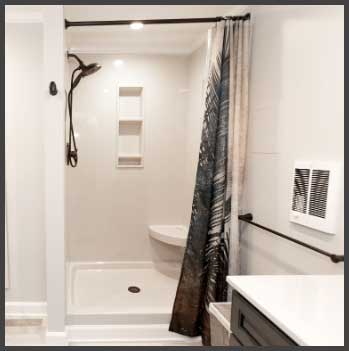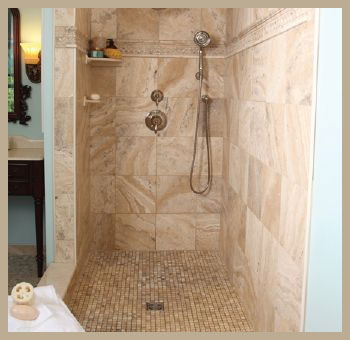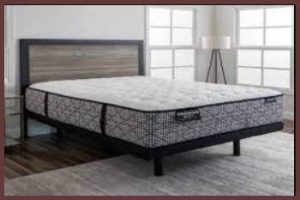Are you considering a bathroom remodel and wondering whether to choose Onyx or tile for your shower? Both options have advantages and disadvantages, and making the decision is overwhelming. In this article, we will compare Onyx and Tile shower to help you make an informed decision.
A Brief Comparison Table
| Feature | Onyx Shower | Tile Shower |
| Appearance | Available in a wide range of colors and patterns, with a sleek and modern appearance | Available in a wide range of styles and materials, including ceramic, porcelain, and natural stone |
| Durability | Strong and durable, resistant to scratches, stains, and other forms of damage, and non-porous, making it resistant to mold and mildew | Durable but can be susceptible to cracking or chipping over time, and the grout lines between the tiles can be a potential area for water damage and mold growth |
| Maintenance | Easy to clean and maintain due to its non-porous surface | Requires more maintenance due to the grout lines between the tiles, which can accumulate dirt and grime over time and require periodic resealing |
| Cost | More expensive than tile showers | Generally less expensive than Onyx showers, but the cost can vary depending on the type of tile and the complexity of the design |
| Slipperiness | Smooth surface can be slippery when wet, but can be mitigated by using a non-slip bath mat or adding a textured surface to the shower base | Can be slippery, especially if the tiles are glossy or if they are not textured |
| Installation | Requires professional installation, which can be time-consuming and expensive, and installing an Onyx shower may require additional structural support due to its heavy weight | Requires professional installation, which can be time-consuming and expensive |
| Limited Design Options | There may be limited design options available depending on the manufacturer and supplier | There may be limited design options available depending on the manufacturer and supplier |
Differences Between Onyx And Tile Showers
- Appearance

Onyx showers have a sleek and modern appearance that is sure to make a statement in any bathroom.
With the variety of colors and patterns that Onyx offers, you have the freedom to design a unique appearance that matches your style.
On the other hand, tile showers offer huge options in styles and materials, such as ceramic, porcelain, and natural stone.
Tile is also customizable, but the grout lines between the tiles can be difficult to clean and can accumulate dirt and grime over time.
- Long Lasting Materials
It is a strong, long-lasting material that doesn’t scratch, stain, and other types of damage resistant. It is also not porous, meaning it’s mold and mildew resistant.
Tile is also durable, but it can crack or break more easily over time. The grout lines between the tiles can also be a potential area for water damage and mold growth.
Also Read: Is Ashford Porcelain Tile Worth It?
- Maintenance
Onyx showers are easy to clean and keep up because they don’t absorb water and have resistance to mold and mildew. You can clean them with water and a light soap.
Tile showers require more maintenance, as the grout lines can accumulate dirt and grime over time. The grout lines may need to be resealed periodically to prevent water damage and mold growth.
- Reasonable Price
Onyx showers are a premium material and can be more expensive than tile showers. However But the price can change based on the size of the shower and how complicated the design is.
Tile showers are usually less expensive than Onyx showers, but the cost can also change based on the type of tile and how complicated the design is.
- Slipperiness
The smooth surface of Onyx shower bases can be slippery when wet. This can be mitigated by using a non-slip bath mat or by adding a textured surface to the shower base. Tile showers can also be slippery, especially if the tiles are glossy or if they are not textured.
Potential Drawbacks To Onyx And Tile Showers
While Onyx and tile showers both have their advantages, they are not without their potential drawbacks. Here are some potential drawbacks to consider when choosing between Onyx and tile for your shower:
- Cost

Both Onyx and tile showers can be expensive, with Onyx being the more premium option. If you are looking for a budget-friendly option, you have to think about cheaper shower materials.
- Slipperiness
Both products can be slippery when wet, increasing the risk of slips and falls.
To avoid accidents, it’s important to take safety measures like using a non-slip bath mat or giving the shower floor a rough surface.
- Maintenance
While Onyx showers are low-maintenance due to their non-porous surface, they can still be susceptible to scratches and damage if not cared for properly.
Tile showers require more maintenance due to the grout lines between the tiles, which can accumulate dirt and grime over time and require periodic resealing.
- Installation
Both of these require professional installation, which can be time-consuming and expensive. Additionally, installing an Onyx shower may require additional structural support due to its heavy weight.
- Limited Design Options
While Onyx and Tile both offer a wide range of customization options, there may be limited design options available depending on the manufacturer and supplier. This can make it hard to find a shower curtain in the exact color or pattern you want.
- Potential for Water Damage
Both Onyx and tile showers are susceptible to water damage if not installed properly or if there are cracks or gaps in the surface. Mold and mildew can spread after water damage, making removal costly and difficult.
Which Is Better Between Onyx And Tile Shower?
The decision between Onyx and tile for your shower ultimately comes down to personal preference and budget. Onyx is a premium material that offers a sleek and modern appearance, durability, and easy maintenance.
It is more expensive than tile, but homeowners who want a long-lasting, low-maintenance shower should consider it.
Tile is customizable and versatile and it comes in many styles and materials. It is generally less expensive than Onyx, but it requires more maintenance and can be susceptible to water damage and mold growth in the grout lines.
Also Read: Differences Between Acrylic And Onyx Showers.
Frequently Asked Questions (FAQ)
Yes, Onyx is a great choice for showers. It is scratch, stain, and damage-resistant. Non-porous, it resists mold and mildew.
Yes, Onyx is a great choice for shower walls. It’s tough, stain-proof, and scratch-resistant and protects from other types of harm. Additionally, it’s Non-porous, it resists mold and mildew. With the variety of colors and patterns that onyx offers, you have the freedom to design a unique appearance that matches your taste.
Solid surface walls like Onyx are a great alternative to tile in a shower. They’re very strong, durable, scratch-proof, and stain-resistant and also protect from other types of damage. They are also non-porous, which makes them mold and mildew resistant. Customizable, solid surface walls also allow you to design a unique appearance that matches your style.
Yes, Onyx showers are easy to clean. Onyx is non-porous, making it resistant to mold and mildew and cleaning it with light soap and water is a breeze.
The smooth surface of an Onyx shower base can be slippery when wet. This can be mitigated by using a non-slip bath mat or by adding a textured surface to the shower base. It is important to take safety precautions to prevent slips and falls in the shower.
Final Thoughts
Whether you choose Onyx or tile for your shower, it is important to consider your personal preferences, budget, and maintenance requirements. The choice ultimately depends on what is best for you and your bathroom since both solutions offer benefits and drawbacks.
You can make an informed choice and design a lovely and useful shower that you will enjoy for years to come by weighing the advantages and disadvantages of each option and spending the time to research and compare goods.



